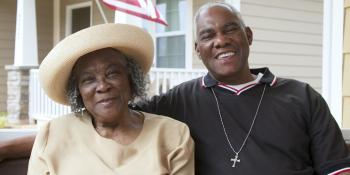Through our Aging in Place program, Habitat helps older adults age at home and in communities of their choice. Our local Habitat affiliates collaborate with human services organizations to evaluate individual needs and provide critical home repairs, modifications and community services specific to each homeowner’s lifestyle to preserve their home and their independence.
Find your local Habitat affiliate to learn about aging in place work in your area.
The need
The need for Habitat’s work is immense: older Americans are one of the fastest-growing demographics in the country – by 2030, 20% of the U.S. population will be 65 or older. Yet, more than 19 million older adults are living in homes that are in disrepair or ill-equipped to safely meet their needs.
Our impact: Advancing housing and health equity
We know that aging in place extends longevity and quality of life, and safe and stable housing and community networks are core to these outcomes. Surveys of homeowners that partner with us show they’re mentally and physically healthier, feel safer at home, and engage with their family and friends more.
Safe and accessible housing is a key social determinant of health. As leaders in housing, with our vast network across the United States and evidence-based approach, Habitat’s Aging in Place program advances both housing and health equity for older Americans.
By supporting Habitat, you can help more older adults age in place.
Our unique approach: Housing Plus model
Habitat is consistently working at the intersection of housing, human services and health in all that we do. We innovated the Housing Plus model, a range of person-centered, holistic approaches that starts with the older adult’s needs, then builds out a solution that incorporates not only home repairs and modifications, but community resources as well.
By looking at a full network of resources in addition to offering repairs and modifications, Habitat helps tailor a holistic approach for each homeowner so they can safely and securely remain in their homes as they age.
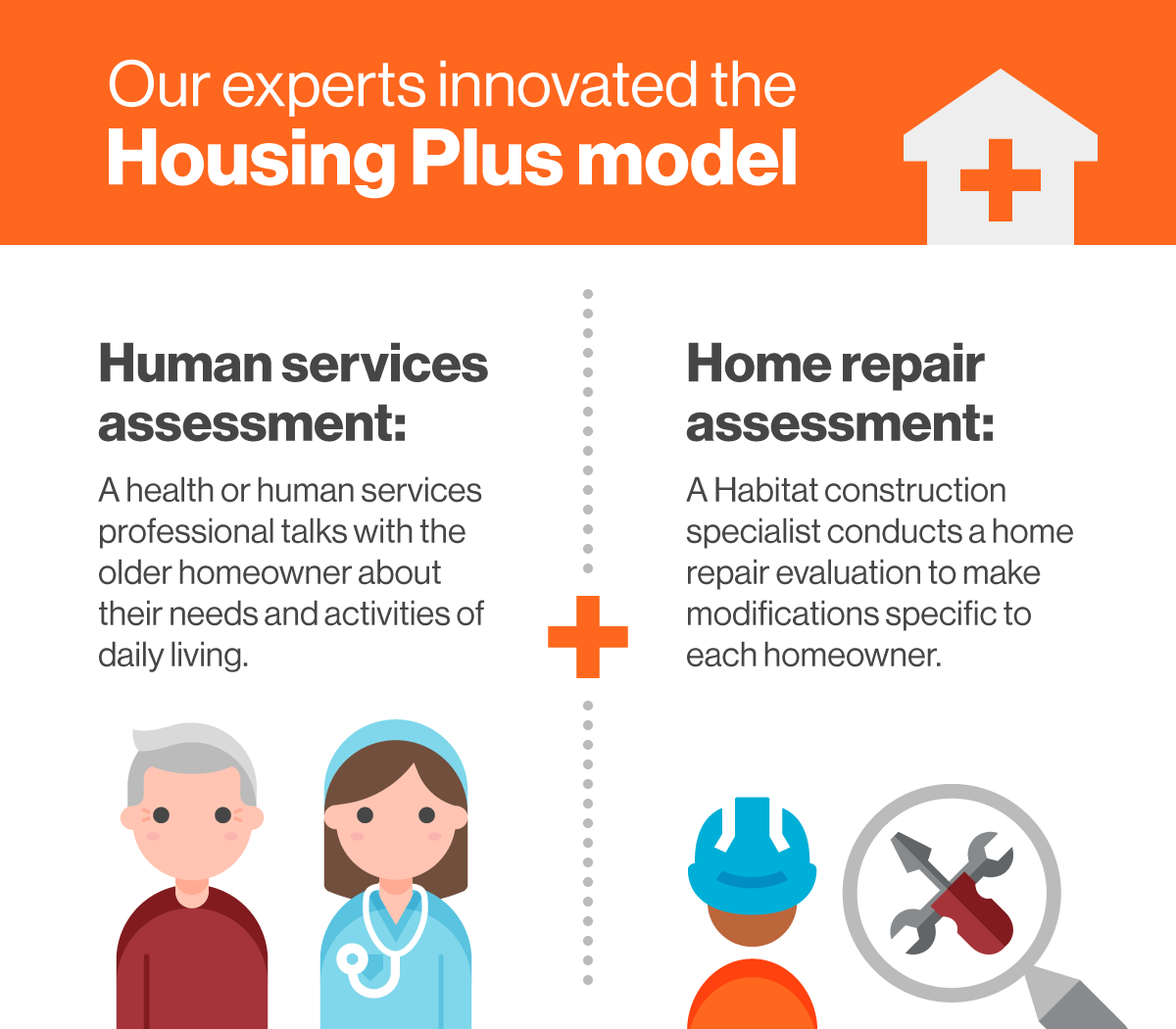
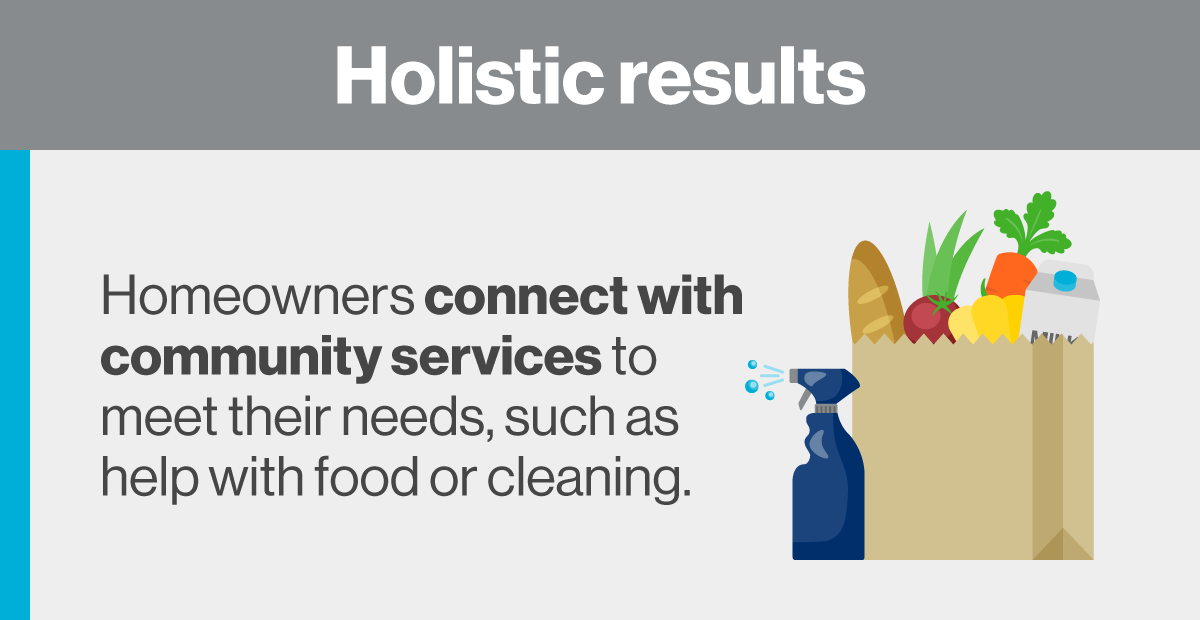
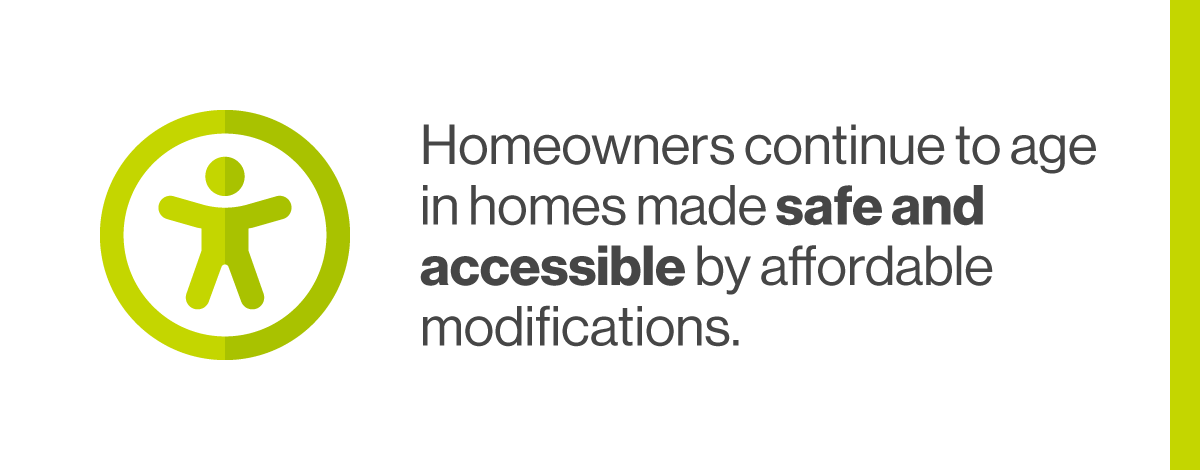
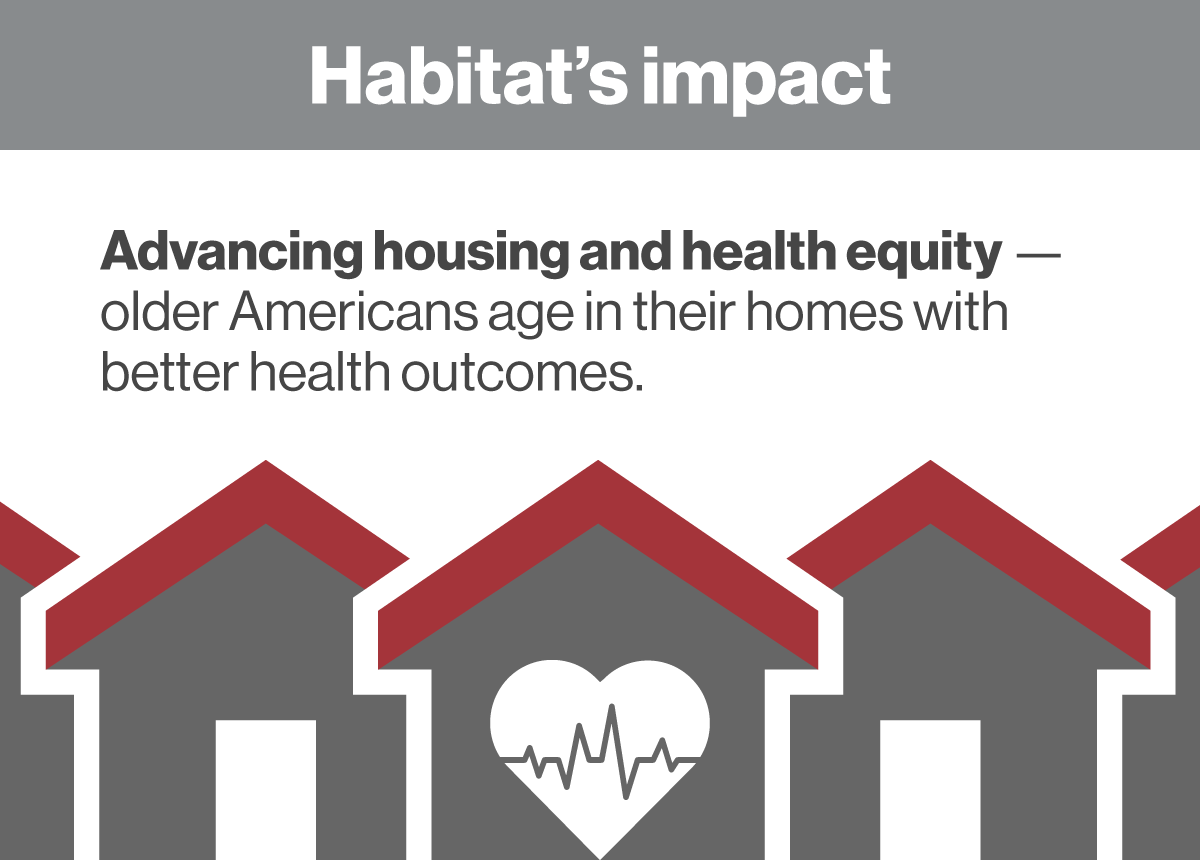
At a minimum:
- The first assessment is completed by a health or human services professional and focuses on listening and learning about the homeowner’s activities of daily living, such as how they pay bills, clean their homes, communicate with others, run errands and shop.
- The second assessment includes a home repair evaluation by a Habitat construction specialist, which allows the affiliate to provide modifications specific to each homeowner’s lifestyle.
For example, installing lever door handles, ramps, rails and raised toilets could make a home more accessible for older adults. Older residents also might need additional community resources, such as connection to their Area Agencies on Aging.




